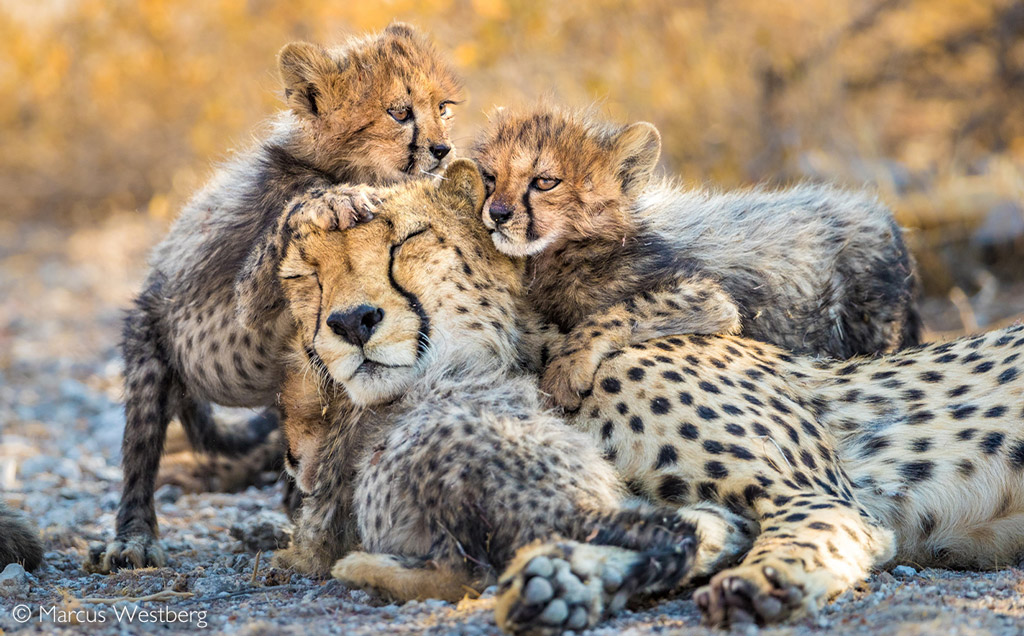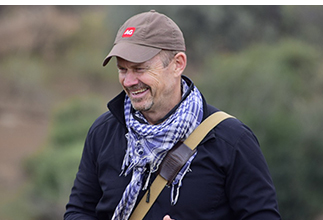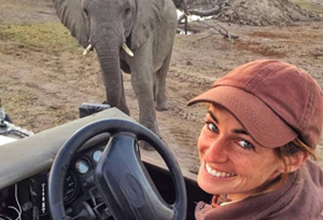
This is a copy of our weekly email newsletter. Subscribe here to receive the newsletter.
Nairobi National Park + captivating genets

I had a reality check a few days ago during a discussion with our scientific editor Jamie – about the introduction of Southeast African cheetahs to India to replace the locally extinct Asiatic cheetah. During teamAG discussions, I had expressed concern about swapping out different subspecies in the name of conservation. Surely that amounts to moving against nature’s long-term intention via evolutionary processes? My line was drawn in the sand. Then Jamie pointed out that the recent introduction of southern white rhino into Garamba National Park (DRC) to replace the extinct northern white rhino – which I supported – amounts to the same thing. Touché Jamie!
As an aside, you can use the search function on our website to access our vault of fascinating natural history articles and safari information going back many years. Oh, and it’s free of charge. Did you know that we have been around since 1991? What a journey!
Keep the passion

Simon Espley – CEO, Africa Geographic
From our Editor – Taryn van Jaarsveld

The image of a lion bounding across the savannah juxtaposed against Nairobi’s cityscape may seem surreal. But this is exactly the sighting awaiting visitors to Nairobi National Park, directly pressed up against Kenya’s capital city. This park is no less wild than some of Kenya’s more renowned offerings. The park provokes a poignant metaphor of wildlife and man, and the effect is a safari experience unlike any other. Keen to visit this unique landscape, suspended at the interface of wilderness and civilisation? Read our first story below.
Most safari-goers have had the pleasure of encountering a genet while out on a game drive, or even back at camp, hanging out near humans to try to scavenge tasty morsels pinched from the dinner offering. While they are frequently spotted, genets are no less captivating. These solitary, cryptic animals are beautiful and graceful to behold. Read all about these cat-like carnivores in our second story.
In our last post, we delve into a rather novel way to experience the delights of Africa: the mobile safari. Can you see yourself returning from the day’s safari activities to a brand new destination every day? On a mobile tented safari, a seasoned support team will be there to pamper you and move your mobile tented camp from location to location while you are out there exploring. Read more about this authentic safari concept below.
Happy celebrating Africa!

Story 1
https://africageographic.com/stories/nairobi-national-park/
NAIROBI NP
In the heart of Kenya’s capital, wilderness meets civilisation in Nairobi National Park
Story 2
https://africageographic.com/stories/genets-of-africa/
GENETS OF AFRICA
Genets are cat-like carnivores of Africa, frequently spotted on safari
Story 3
https://africageographic.com/travel/experiences/mobile-safari
MOBILE SAFARI
Mobile tented safaris are an authentic way to travel across African landscapes

From our Scientific Editor – Jamie Paterson

Since Simon brought it up, did you know that the division of living things into species/subspecies is one of the most controversial points of contention across all ecological fields of study? Feathers have flown in ornithological circles, entomologists bug each other on the subject and don’t even get me started on microbiologists. Insults like “lumper” and “splitter” (possibly coined by a botanist colleague of Darwin) are bandied about without concern for hurt feelings.
Because the distinction between species and subspecies is complicated by so many factors: geographical isolation, differences in genetic sampling approaches, politics…Some scientists have even posited that one’s approach to the matter is influenced by individual personality.
However, it is a subject that poses some important philosophical questions about the conservation of large-mammal species. When we seek to protect subspecies, what is the priority? Their genetics, morphology, ecological role or simply their intrinsic value? Because that will influence the decisions we make on everything from translocations to making little inbred test-tube babies.

 WATCH: Wish you were here? Make your African safari dreams a reality with us. Choose from our carefully curated safari packages or customise your own adventure with our travel team. Why wait? Start planning your perfect trip now! (00:58). Click here to watch
WATCH: Wish you were here? Make your African safari dreams a reality with us. Choose from our carefully curated safari packages or customise your own adventure with our travel team. Why wait? Start planning your perfect trip now! (00:58). Click here to watch
To comment on this story: Login (or sign up) to our app here - it's a troll-free safe place 🙂.![]()






